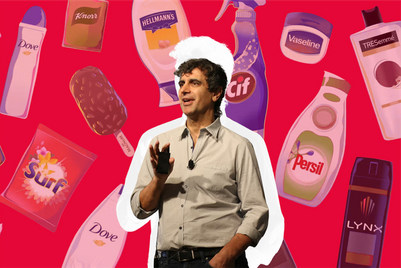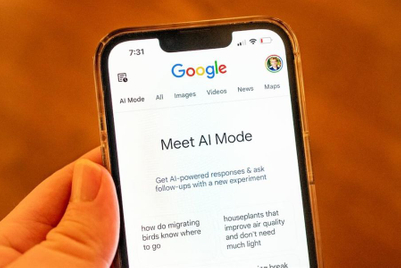
It may have been roasted on Saturday Night Live, but the Biden administration’s decision to brief TikTok influencers on Vladimir Putin’s invasion of Ukraine is being heralded by former White House press secretaries and other experts.
They say it feels like a watershed moment for the White House as a social media powerhouse, like when President Barack Obama had his first Google Plus Hangout in 2012 or sat Between Two Ferns with actor Zach Galifianakis on FunnyorDie.com in 2014.
“The White House's effort to educate and inform TikTok influencers feels groundbreaking, and right for the moment, in light of how the war in Ukraine is playing out in real time on social platforms,” says David Aglar, EVP of platform strategy at Weber Shandwick.
On TikTok, people around the world have borne witness to some of the first images and videos of Russia’s assault on Ukraine. That includes a video of missiles descending on the nation’s capital, Kyiv, posted by 20-year-old creator Marta Vasyuta. The video features the song “Little Dark Age” by the American band MGMT, playing in the background.
It has been viewed more than 50.8 million times, and generated more than 9.4 million likes and 137,000 comments. Vasyuta and other content creators on the front lines continue to produce video and images of the horrors unfolding to hundreds of thousands, if not millions, of views.
“Because of TikTok's multimedia format and powerful algorithm to surface content, it has become a central location for open-source intelligence from Ukrainian citizens sharing their stories,” says Aglar.
In fact, so much so, that their influence may arguably outweigh the CNNs of the world, he argues.
“The reach of top TikTok influencers rival that of major news outlets and may have more power to shape narratives and belief patterns than traditional news,” says Aglar.
That the White House has reached out to influencers on TikTok about the biggest conflict in Europe since World War II is what Aglar says makes this feel particularly groundbreaking.
“While past administrations have recognised and tapped into the power of social media, this is the first time a social platform has played such a key role in how a war is waged,” he notes.
White House press secretary Jen Psaki and National Security Council advisor Matt Miller briefed a reported 30 TikTok stars via Zoom on March 10. The two provided background on the crisis and the U.S.’s “strategic goals” in the region, and also fielded their questions, from the US’s relief efforts for Ukrainians to the possibility of Russia launching a nuclear attack.
On Twitter, Rob Flaherty, digital strategy director for the White House, confirmed the meeting, explaining, “An astonishing amount of people are learning about the invasion of Ukraine through digital creators who have begun to cover it. We take that really seriously, and are working to make sure those creators have the ability to have their q's answered.”
Robert Gibbs, former president Barack Obama’s first press secretary and now senior counsel at Bully Pulpit Interactive, calls the outreach “really smart.”
“You have to go where your audience is, and their briefing with these influencers also shows an understanding that these platforms aren’t just for funny videos that you send to your friends,” says Gibbs. “They are also an outlet for serious news topics.”
Still, the platform’s image as a place for teenagers to make goofy videos with catchy songs has been hard to shake.
On March 12, SNL spoofed the meeting in its cold open. Playing Psaki, actress Kate McKinnon says “I suggested it as a joke and then it actually happened.” Another SNL cast member plays a dim TikTok creator who suggests ending the Ukraine war to dance moves.
“It was sort of funny,” remarks Gibbs. “But look, if you do something like that, and it ends up on TV, then you are probably doing something right.”
But is there any truth that some in the White House might have thought, ‘We’re not seriously going to brief a bunch of young Tik Tokers, are we?’
“Probably,” says Gibbs, recalling the apprehension when he suggested in 2008 that incoming president Obama become the first sitting POTUS to make a late-night talk show appearance. (He would on NBC’s Tonight Show after his inauguration.)
“You can imagine what most people inside the building first thought, which was, ‘You can’t do that,’” recalls Gibbs. “But I think the White House understands there was a vibrant play and a big platform to tap into with TikTok.”
“Ultimately, they were clearly able to step back and explain the reason why they should do this,” says Gibbs. “The mindset that presidents don’t do certain things is something communicators are looking to dispense with, never more so than today when you can no longer reach the majority of the country on the evening newscasts of the major networks.”
Margarita Diaz, strategy director for mobilisation at Blue State, who was digital engagement lead for the Biden-Harris transition team and served as digital director for Sen. Kirsten Gillibrand (D-NY), agrees the SNL spoof reflects that this is innovative, proactive comms from the White House.
“This is more a badge of honour for the Biden Administration than humor at its expense,” she says. “The way content is presented and created on TikTok is certainly a departure from the typical communications coming out of the office of the President, but, it's that juxtaposition that makes this type of engagement so great, and much needed if the administration can hope to engage with younger audiences."
Citing estimates that TikTok is expected to reach 1.5 billion monthly users by the end of 2022, Diaz notes these influencers’ reach goes beyond the social media platform du jour, giving the White House potential outreach onto other platforms like Instagram.
Christina Najjar, who went from unemployed writer to TikTok star Tinx (and also known as TikTok’s big sister), has more than 1.5 million followers on TikTok, but also 457,00 followers on Instagram.
“I think she is really interesting, because she creates similar messaging across platforms, but it is tailored based on her audiences on each of those platforms,” says Diaz.
It remains to be seen how effective the outreach has been for the White House on TikTok. According to an article in the Washington Post, some influencers expressed feeling more empowered to debunk misinformation and communicate effectively about the crisis with their followers.
Others were critical, like Kahlil Greene, who was dissatisfied with the answer to his question, why they should be “in strong support of the US” on the Ukraine conflict when the administration hasn’t given enough attention to other serious issues, including among marginalised communities in its own backyard.
Experts say this is why it’s critical the White House approach this as the start of an ongoing outreach to these influencers, not a one-and-done approach.
“I think this was smart,” says founding partner of Firehouse Strategies Alex Conant, a former RNC press secretary and Rubio campaign comms director. “However, if the White House really wants to successfully convey messages to people on TikTok, they need to build relationships with the influencers that they’re briefing and not just share information and expect that will be enough. That means engaging in two-way dialogue with them and soliciting feedback to ultimately build their trust.”





.jpg&h=334&w=500&q=100&v=20250320&c=1)
.jpg&h=334&w=500&q=100&v=20250320&c=1)
.jpg&h=334&w=500&q=100&v=20250320&c=1)
.jpg&h=334&w=500&q=100&v=20250320&c=1)
.jpg&h=334&w=500&q=100&v=20250320&c=1)




.png&h=268&w=401&q=100&v=20250320&c=1)
.jpg&h=268&w=401&q=100&v=20250320&c=1)

.jpg&h=268&w=401&q=100&v=20250320&c=1)

.jpg&h=268&w=401&q=100&v=20250320&c=1)
.jpg&h=268&w=401&q=100&v=20250320&c=1)